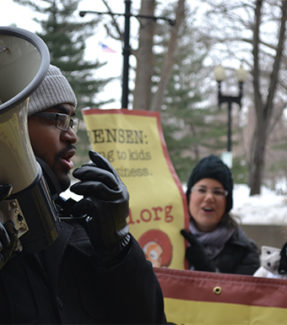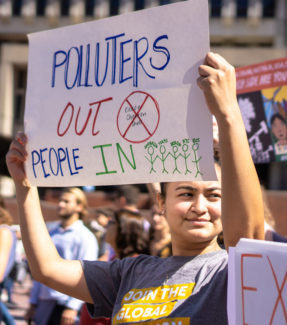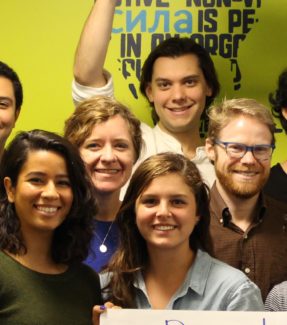Corporate Accountability’s Black Collective sees four conditions facing Black people in the United States: White supremacy, institutional racism, individual bigotry, and mass denial. Understanding these facets of White racism and anti-Blackness is critical to address the harms the U.S. enacted on Black communities and to advance the cause for reparations for Africans in America. Concerning the element of mass denial – there is a concerted effort by Democratic politicians to present Black faces in high places as proof of progress in achieving racial equality, and by Republican politicians to act as though White racism is a relic of the past, as they campaign on banning teaching Critical Race Theory in schools while at the same time many of them support the Great Replacement Theory. Meanwhile, Black Americans continue to suffer from racial gaps in wealth and income, disproportionate violence at the hands of police, higher rates of mass incarceration, disparities in health outcomes, and more. In 2008, as America elected its first Black president, a study of life expectancy rates of Black men in Harlem, NY, found:
“Even males in Bangladesh, one of the poorest countries in the world, have a better chance of reaching 65 than African American males in Harlem. The biggest killers in poor African American communities are not drugs or bullets but chronic diseases like stroke, diabetes and heart disease. Former Surgeon General Dr. David Satcher and colleagues calculated that 83,000 African American ‘excess’ deaths could have been prevented in 2002 if Black-white differences in mortality were eliminated.” (Unnatural Causes Health Equity Quiz).
Not much has changed from 2008 to now. Dr. Marcella Alsan, infectious disease physician and Professor of Public Policy at the Harvard Kennedy School, co-authored a 2019 paper for the American Economic Review titled “Does Diversity Matter for Health?: Experimental Evidence from Oakland” that found that due to lack of access to health insurance, lower socioeconomic status, and structural racism, Black men have the lowest life expectancy of any major demographic group in the United States. It also found that Black men are much more likely to demand preventative care, including invasive care, once meeting with a racially concordant doctor. This is especially notable in the midst of the COVID-19 pandemic, which exacerbated these inequities. The lack of action on racial disparities in health outcomes is a clear example of mass denial of structural racism Black Americans face as the United States government makes no effort to acknowledge the reality of the effects of structural racism, let alone solve it.
Instead, White America merely individualizes the problem. Education has long been touted as the way to move up the socioeconomic ladder. Black children were intentionally denied access to proper education, with citizen mobs burning down Black community schools with no intervention. Post Brown vs. Board of Education, multiple states fired Black teachers en masse to ensure white teachers at integrated schools would retain their positions. While the amount of Black Americans in higher education has increased over time, white college graduates have seven times the wealth of Black college graduates. Even White high school dropouts have more wealth, inherited through their parents, than Black college graduates, showing that we can’t simply remedy the racial wealth gap through labor. The United States must give financial redress to pay for the harms it continues to commit against Black Americans.
Black activists have long pointed to international definitions of genocide to justify the call for reparations. The United Nations’ Genocide Convention of 1948 defines genocide as such:
“In the present Convention, genocide means any of the following acts committed with intent to destroy, in whole or in part, a national, ethnical, racial or religious group, as
such:
(a) Killing members of the group;
(b) Causing serious bodily or mental harm to members of the group;
(c) Deliberately inflicting on the group conditions of life calculated to bring about its physical destruction in whole or in part;
(d) Imposing measures intended to prevent births within the group;
(e) Forcibly transferring children of the group to another group” (United Nations).”
Seven decades ago, a contingent of Black leaders including, but not limited to W.E.B. Du Bois, William L. Patterson, Claudia Jones, and Paul Robeson submitted a paper to the United Nations titled We Charge Genocide: The Historic Petition to the United Nations for Relief From a Crime of the United States Government Against the Negro People, accusing the United States of committing injurious and pernicious harms against its citizens of African descent and emphasizing that White American racism was the concern not solely of the United States, but of the entire world. The United Nations Commission on Human Rights did not acknowledge the petition. Thirteen years later, upon his split with the Nation of Islam, Malcolm X spoke about raising the persecution of African-Americans once again at the United Nations. He was successful in working with African leaders, to get a resolution passed at the 1964 Organization of African Unity (OAU) conference to demonstrate their concern for the treatment of their long-lost brothers and sisters in the United States. This is significant for the fact that it proved the merits of an international approach towards addressing civil rights in the United States.
It is contingent upon our generation to take up the work that was started decades ago but that has gone unfinished. It is contingent upon true, sincere White and non-Black allies or aspiring allies of the Black liberation struggle to recognize this fact and to make a commitment toward ensuring that justice does not go deferred any longer.
Historically, we’ve seen several successful examples of reparations, including for South Africa’s apartheid regime and the U.S. internment of Japanese Americans during WWII. More recently, Canada agreed earlier this year to pay $40 billion ($31 billion in US dollars) to Indigenous Canadians for child removal programs that forced children into residential schools in attempts to eliminate their cultural identities.
Today, the movement for reparations both globally and in the U.S. continues. In each congressional session since 1989, Congress has introduced legislation to create a commission to study and develop a plan for reparations to Black Americans for the atrocities that the thirteen colonies and the U.S. government thereafter committed:
“This bill establishes the Commission to Study and Develop Reparation Proposals for African Americans. The commission shall examine slavery and discrimination in the colonies and the United States from 1619 to the present and recommend appropriate remedies” (H.R. 40 – Commission to Study and Develop Reparation Proposals for African Americans Act).
Although America never delivered on its promise of “40 Acres and a Mule” to formerly enslaved Black Americans, the call for reparations is picking up steam. Today, the bill has nearly 218 cosponsors in the House, the most support the bill has ever received. Ahead of Juneteenth, our allies – including the National African American Reparation Commission, convened by the Institute of the Black World 21st Century and others – are calling on Congress to finally take accountability for the tacit and/or explicit approval of the United States government in the historical and current genocide against the Black community and pass H.R. 40. We urge you to join us and our allies in calling your congressional representatives and urge them to cosponsor H.R. 40. No longer is the mentality of mass denial acceptable.
Learn more about the deeply racist history of corporations like Wells Fargo, and the struggle for Black liberation and reparations, on this beautifully illustrated timeline by Paloma Rae.


